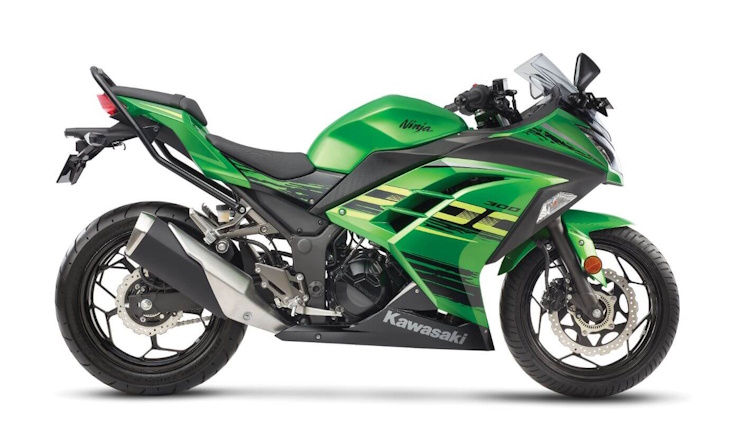In the realm of mid-range sports bikes, the Kawasaki Ninja 300 has carved a niche for itself, appealing to enthusiasts who seek a balance between performance and accessibility. With its sporty design and engaging riding dynamics, the Ninja 300 aims to captivate both track enthusiasts and adrenaline junkies. In this in-depth review, we’ll explore the bike’s offerings in design, performance, and technological features, and assess its comparative standing in the market.
Design and Aesthetics
The Kawasaki Ninja 300 boasts a sleek and aerodynamic design that immediately sets it apart from its competitors. The bike’s sharp lines, aggressive styling, and sporty stance all contribute to its visual appeal. The attention to detail is evident in the premium components, such as the LED tail light and the high-quality alloy wheels. The Ninja 300’s aesthetics align perfectly with the expectations of the mid-range sports bike segment, exuding a sense of performance and desirability.
Engine and Performance
At the heart of the Kawasaki Ninja 300 lies a potent 296cc, liquid-cooled, 4-stroke parallel-twin engine. This powerplant delivers an impressive 39 PS of peak power at 11,000 rpm and 26.1 Nm of max torque at 10,000 rpm. The bike’s performance is further enhanced by its advanced fuel injection system and smooth power delivery. The Ninja 300’s throttle response is crisp and responsive, making it a joy to ride both on the track and on the streets. The engine’s heat management technology ensures optimal performance even in demanding riding conditions.
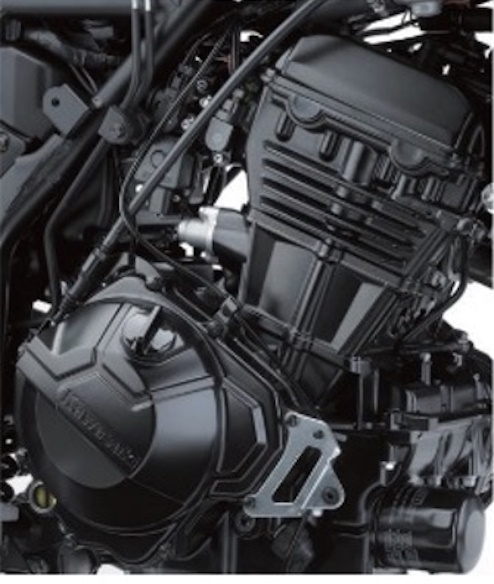
Handling and Suspension
The Kawasaki Ninja 300’s handling dynamics are a testament to its well-engineered chassis and suspension setup. The bike features a tube diamond steel frame that provides excellent rigidity and stability. The front suspension comprises a 37 mm telescopic fork with 120 mm of travel, while the rear features a Bottom-Link Uni-Trak with a gas-charged shock and 5-way adjustable pre-load, offering 132 mm of travel. The Ninja 300’s cornering prowess is remarkable, thanks to its agile geometry and responsive handling. Whether you’re carving through tight hairpins or attacking fast sweepers, the bike inspires confidence and delivers an exhilarating riding experience.
Braking and Tires
Safety is paramount, and the Kawasaki Ninja 300 excels in this department. The bike comes equipped with a dual-channel ABS system, ensuring optimal braking performance in various riding conditions. The front brake features a 290 mm disc, while the rear is equipped with a 220 mm disc, providing ample stopping power and precise control. The Ninja 300 rides on high-quality tubeless tires that offer excellent grip and stability across different surfaces.
Electronics and Technology
While the Kawasaki Ninja 300 may not be laden with cutting-edge electronics, it does offer essential features that enhance the riding experience. The bike comes equipped with a digital instrument cluster that provides clear and concise information to the rider. The inclusion of an assist and slipper clutch ensures smooth and precise gear shifts, especially during aggressive downshifts. The Ninja 300’s technological offerings strike a balance between simplicity and functionality, allowing riders to focus on the pure riding experience.
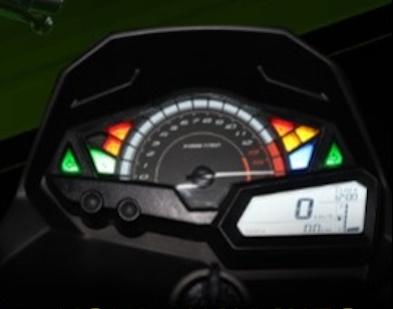
Ergonomics and Comfort
The Kawasaki Ninja 300’s ergonomics are designed to provide a sporty yet comfortable riding position. The bike features a split seat design, offering a comfortable perch for both the rider and the pillion. The handlebars are set at a reasonable height, promoting a slightly aggressive riding stance while still maintaining a relaxed posture. The footpegs are well-positioned, allowing riders to find their ideal riding position. The Ninja 300’s ergonomics cater to a wide range of riders, making it suitable for both short sprints and longer rides.
Riding Experience and Comparisons
On the road, the Kawasaki Ninja 300 delivers a thrilling and engaging riding experience. The bike’s responsive engine, agile handling, and confident braking work in harmony to provide an exhilarating ride. The Ninja 300’s suspension setup strikes a good balance between sportiness and comfort, absorbing road imperfections while still offering excellent feedback. When compared to its rivals in the mid-range sports bike segment, the Ninja 300 stands out with its refined performance, build quality, and overall riding dynamics.
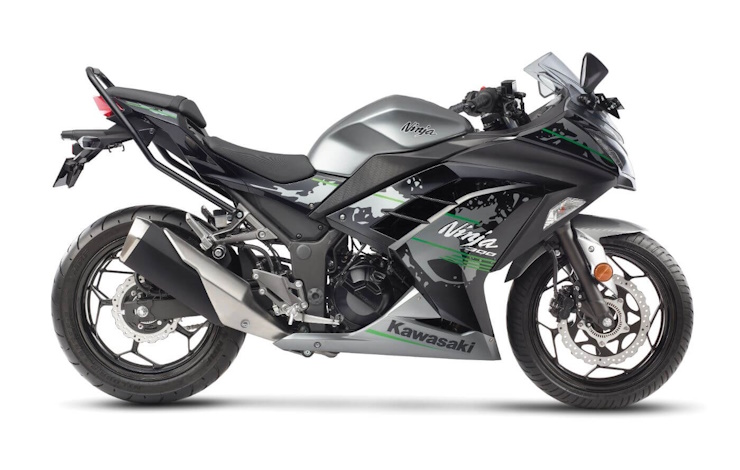
| Variant Name | Price |
| Kawasaki Ninja 300 ABS | Rs. 3,43,000 |
Value and Ownership
The Kawasaki Ninja 300 is priced at Rs. 3,43,000 for the ABS variant, positioning it competitively in the mid-range sports bike segment. Considering the bike’s performance capabilities, build quality, and overall package, it offers good value for money. The cost of ownership is reasonable, with Kawasaki’s extensive service network and reputation for reliability. The Ninja 300’s potential for customization and aftermarket support further adds to its appeal, allowing owners to personalize their ride according to their preferences.
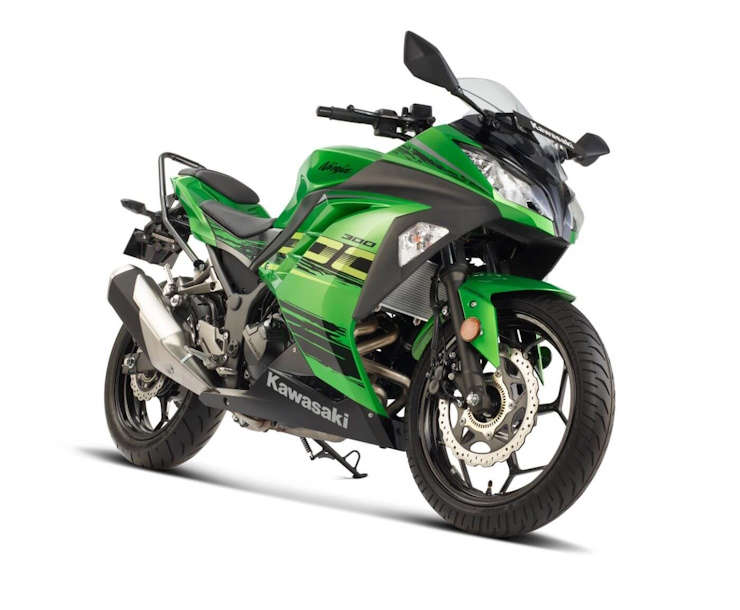
Conclusion
The Kawasaki Ninja 300 is a compelling choice for riders seeking a mid-range sports bike that combines exhilarating performance, agile handling, and sporty aesthetics. Its powerful engine, responsive chassis, and confident braking make it an excellent option for both track enthusiasts and adrenaline junkies. While it may not be the most technologically advanced bike in its segment, the Ninja 300’s focus on the pure riding experience sets it apart. If you’re in the market for a mid-range sports bike that offers Kawasaki’s renowned performance and build quality, the Ninja 300 is definitely worth considering. It delivers a thrilling ride, a sporty presence, and a sense of excitement that will keep you coming back for more.
The post Kawasaki Ninja 300 Review: A Thrilling Mid-Range Sports Bike for Track Enthusiasts and Adrenaline Junkies first appeared on Cartoq.
Source link

